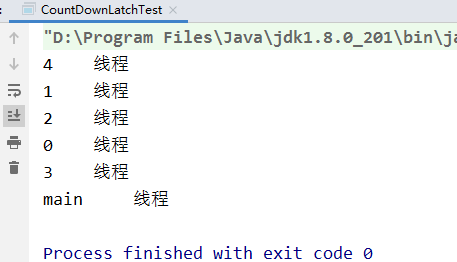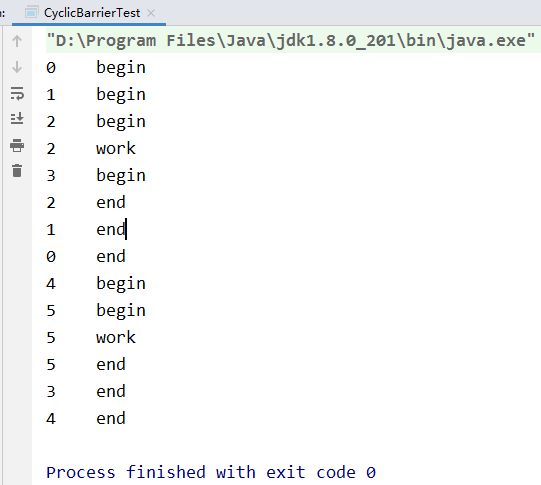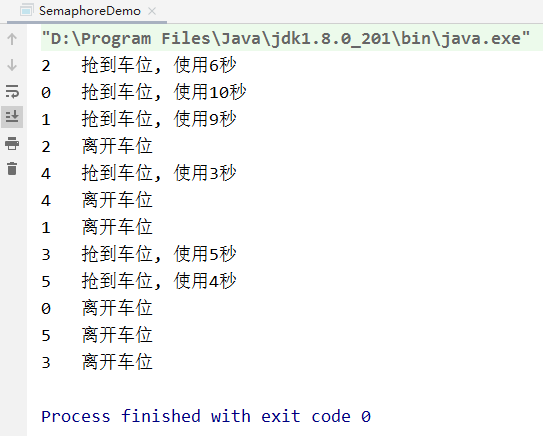Count Down Latch
CountDownLatch (Countdown Counter, Block) lets some threads block until others complete some operations before they are awakened
CountDownLatch has two main methods: when one or more threads call the await() method, the calling thread will be blocked; when other threads call the countDown() method, the counter will be subtracted by one, and the countDown() method will not be blocked.
When the value of the counter is 0, the thread blocked by calling await() method is awakened
public class CountDownLatchTest {
public static void main(String[] args) throws InterruptedException {
CountDownLatch countDownLatch = new CountDownLatch(5);
for(int i = 0; i < 5; i++){
new Thread(()->{
try {
TimeUnit.SECONDS.sleep(1);//Sleep for 1 second
} catch (InterruptedException e) {
e.printStackTrace();
}
System.out.println(Thread.currentThread().getName() + "\t thread");
countDownLatch.countDown(); //Counter minus one
}, String.valueOf(i)).start();
}
countDownLatch.await();//When the counter is 0, wake up the thread
System.out.println(Thread.currentThread().getName() + "\t thread");
}
}Result:

II. Cyclic Barrier
Cyclic Barrier, which blocks a group of threads when they reach a barrier (synchronization point), does not open until the last thread reaches the barrier and the thread continues to execute.
public class CyclicBarrierTest {
public static void main(String[] args) {
// CyclicBarrier cyclicBarrier = new CyclicBarrier(3);
CyclicBarrier cyclicBarrier = new CyclicBarrier(3, ()->{
System.out.println(Thread.currentThread().getName() + "\t work");
});
for(int i = 0; i < 6; i++){
new Thread(()->{
System.out.println(Thread.currentThread().getName() + "\t begin");
try {
cyclicBarrier.await();
} catch (InterruptedException e) {
e.printStackTrace();
} catch (BrokenBarrierException e) {
e.printStackTrace();
}
System.out.println(Thread.currentThread().getName() + "\t end");
}, String.valueOf(i)).start();
}
}
}
Result:

III. Semaphore
Semaphore (semaphore) is mainly used for two purposes, one is for the mutually exclusive interaction of multiple shared resources, and the other is for the control of the number of concurrent threads.
public class SemaphoreDemo {
public static void main(String[] args) {
Semaphore semaphore = new Semaphore(3);//Simulate three parking spaces
for(int i = 0; i < 6; i++){//Simulate six cars
new Thread(()->{
try {
semaphore.acquire();
int time = (int)(1+Math.random()*(10-1+1));
System.out.println(Thread.currentThread().getName() + "\t Grab the parking space, Use"+time+"second");
TimeUnit.SECONDS.sleep(time);
System.out.println(Thread.currentThread().getName() + "\t Leaving the parking space");
} catch (InterruptedException e) {
e.printStackTrace();
}finally {
semaphore.release();
}
}, String.valueOf(i)).start();
}
}
}
Result:
